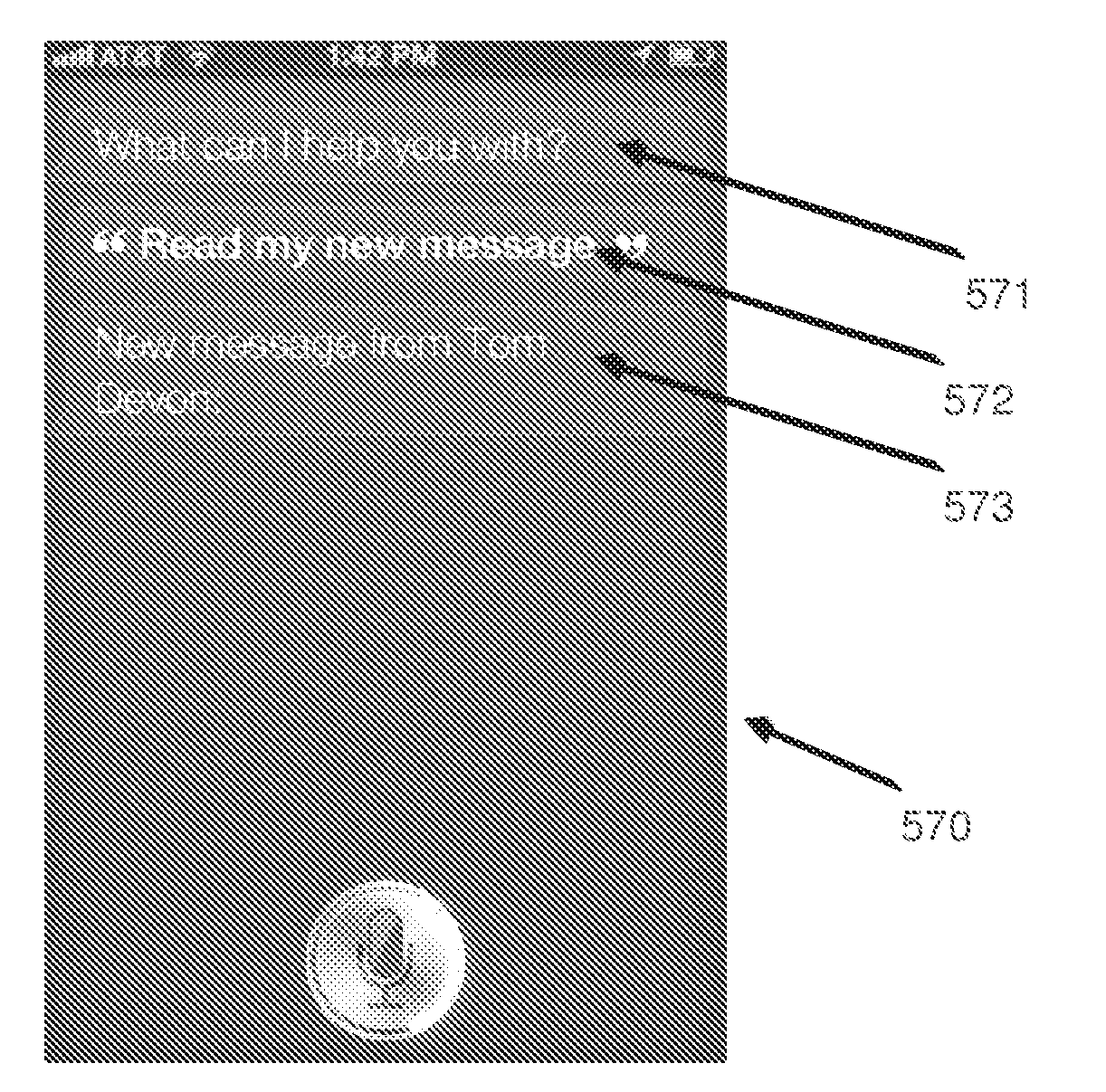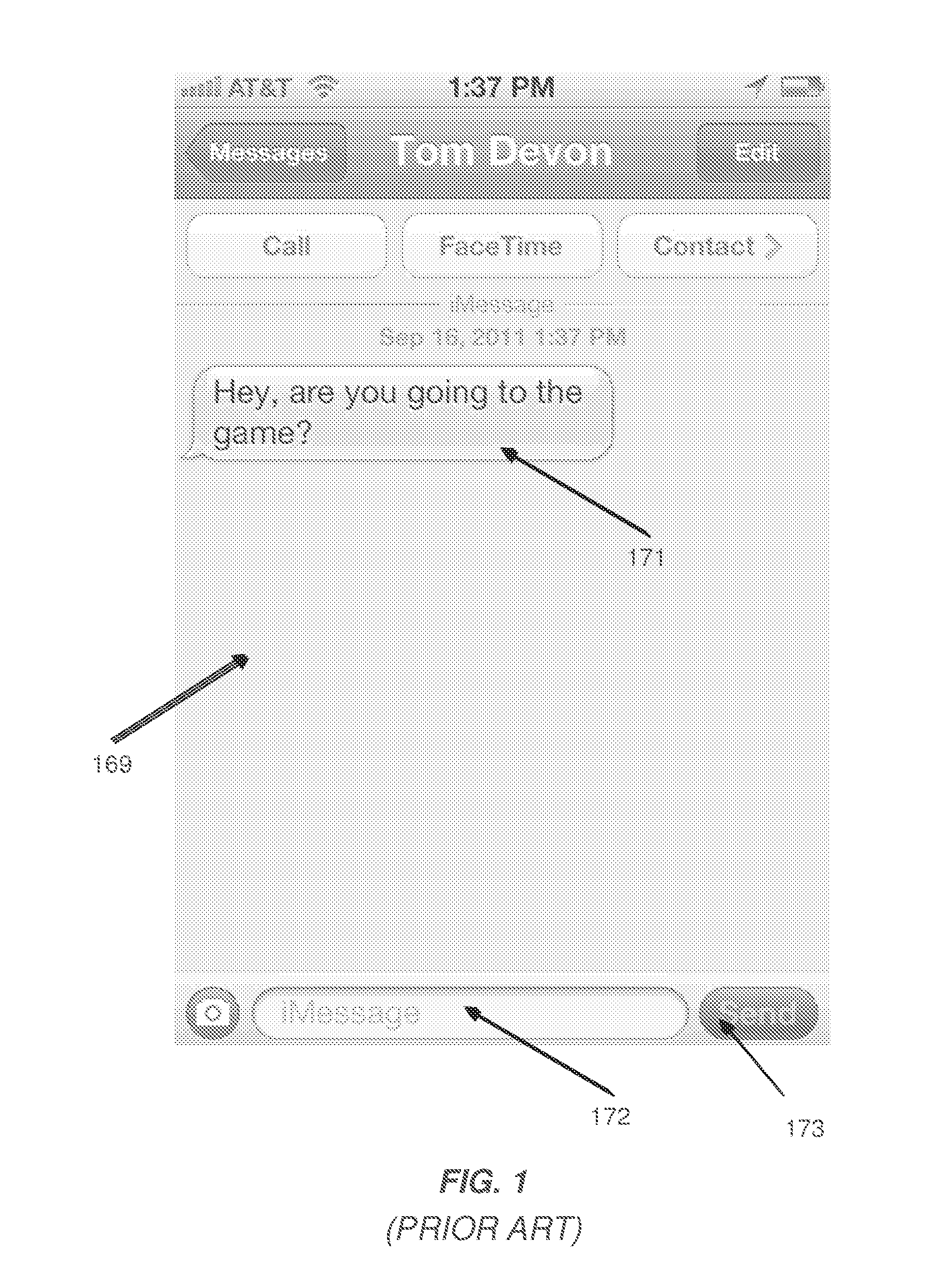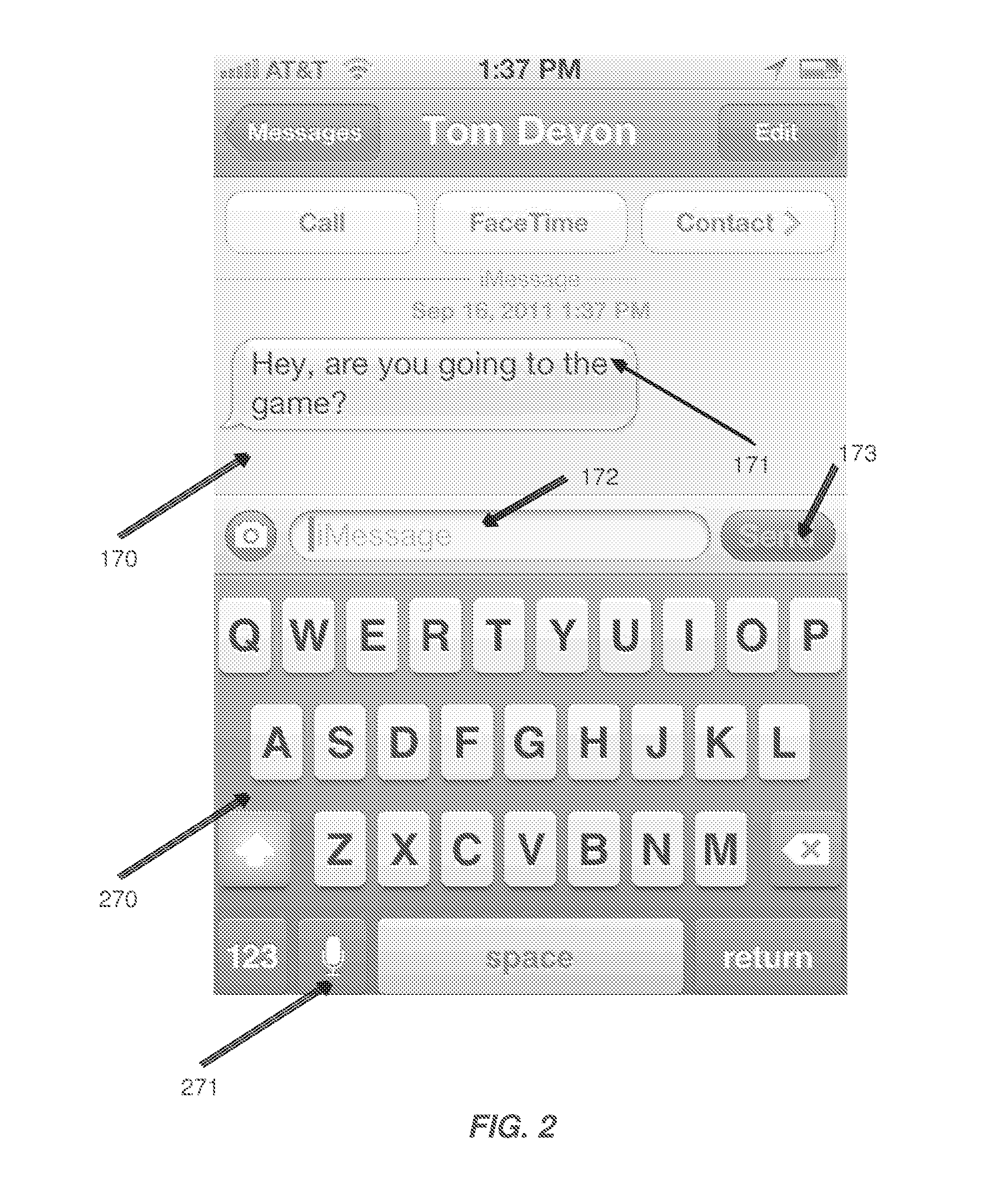Hands-Free List-Reading by Intelligent Automated Assistant
a list-reading and automatic assistant technology, applied in the field of multi-modal user interfaces, can solve the problems of user not always being in a situation where he or she is, many voice commands and ivr systems are relatively narrow in scope, and can not handle a predefined set of voice commands, so as to relieve the user of burden and reduce the burden
- Summary
- Abstract
- Description
- Claims
- Application Information
AI Technical Summary
Benefits of technology
Problems solved by technology
Method used
Image
Examples
example 1
Call a Contact, Unambiguous
[0312]User's spoken input: “Call Adam Smith”[0313]Assistant's 1002 spoken output: “Calling Adam Smith, mobile.”[0314]Call is placed
[0315]Similar interaction would take place for any of the following use cases:[0316]Call contact by Name (“call adam smith”)[0317]Call contact by Name, non-default phone number (“call adam smith mobile”)[0318]Call by Number (“call 800 555 1212”)[0319]Call contact by Relationship Alias (“call my mom”)[0320]Call contact by Location Alias (“phone home”)[0321]Call via FaceTime (“facetime adam smith”)[0322]Call back from context (“call him back”)
example 2
Cancel a Phone Call
[0323]User's spoken input: “Call Adam Smith”[0324]Assistant's 1002 spoken output: “Calling Adam Smith, mobile.”[0325]User notes this is the wrong person to call; user single-presses home button to cancel the call, or says “Stop”[0326]Call is canceled
example 3
Call by Name, Ambiguous
[0327]User's spoken input: “Call Adam”[0328]Assistant's 1002 spoken output: “I found multiple matches for Adam”[0329]Assistant's 1002 visual output: “I found multiple matches for Adam”[0330]Assistant's 1002 spoken output: Read names[0331]Assistant's 1002 visual output:[0332]Disambiguation Menu[0333]Adam Cheyer home[0334]Adam Sandler home[0335]Adam Smith mobile[0336]User's spoken input: “Adam Cheyer”[0337]Assistant's 1002 spoken output: “Calling Adam Cheyer”[0338]Call is placed
PUM
 Login to View More
Login to View More Abstract
Description
Claims
Application Information
 Login to View More
Login to View More - R&D
- Intellectual Property
- Life Sciences
- Materials
- Tech Scout
- Unparalleled Data Quality
- Higher Quality Content
- 60% Fewer Hallucinations
Browse by: Latest US Patents, China's latest patents, Technical Efficacy Thesaurus, Application Domain, Technology Topic, Popular Technical Reports.
© 2025 PatSnap. All rights reserved.Legal|Privacy policy|Modern Slavery Act Transparency Statement|Sitemap|About US| Contact US: help@patsnap.com



